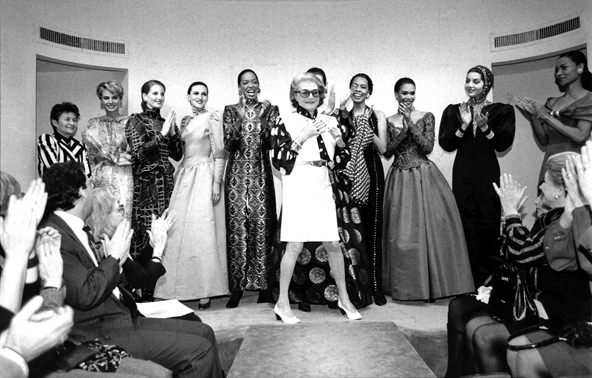Hattie Carnegie - Vintage Designer Spotlight
Hattie Carnegie (1889 -1956) was born in Vienna, Austria. Her name was Henrietta Kanengeiser. In 1900, she immigrated to the United States and settled in New York City with her family. By the time she was 20, she had adopted “Carnegie” as her last name after Andrew Carnegie, who was, at the time, the richest person in America. As a teenager, Henrietta worked at Macy’s as a salesgirl, she became a student of women’s clothing, and her job in the hat department earned her the nickname “Hattie.” In 1909 Hattie opened her first shop with her friend, seamstress Rose Roth, Carnegie-Ladies Hatter. Initially, Roth developed the business's dressmaking side while Hattie focused on the hat design. In 1919 Carnegie bought Roth's share of the business, taking over the clothing design. This was the beginning of Hattie Carnegie Inc. which would lead to a chain of exclusive boutiques across the United States and eventually an $8 million fashion empire.
Whether hats, clothing, or jewelry, Carnegie's designs were coveted by Hollywood stars and celebrities, including; Tallulah Bankhead, Joan Fontaine, Lucille Ball, and Joan Crawford. Carnegie had an inherent instinct for what American women would desire. She flew to Paris on a regular basis to research the latest French fashion, returning home to adapt the looks to meet American sensibilities.
Despite the depression of the 1930's Carnegie’s business thrived as she continued to add more departments to her store; it was said that a lady could be dressed from “Hat to hem” at Hattie Carnegie. By the 1940s, Carnegie’s store was actually a department store; it included a handbag department, where a customer could order a specific bag to match an outfit, the fur salon, a millinery department with a ready-to-wear hat section, a costume jewelry department, an antique furniture and glass department, a cosmetics department and ready-to-wear designs from other design houses. By 1940, Carnegie’s operation was so large that it employed over 1000 workers. Most of them worked in manufacturing her ready-to-wear lines, but her custom shop continued to be the foundation of her business and reputation. Carnegie became known as a woman of taste and was so renowned that she was often featured in her own ads.
During the 1950s, Carnegie continued to make the types of clothes that women across the country had come to expect from her chic but conventional dresses and suits. She especially liked the little black dress and was known for using a particular shade of blue; “Carnegie Blue.” She continued to make hats, accessories , and jewelry. Carnegie also produced ballgowns at this time, often adapted from the French couturiers.
Hattie Carnegie died in 1956. Although the business remained open after her death, much of the desirability of the label lay in the woman herself, and eventually, the label lost its appeal. The Custom Salon was closed in 1965, with the company continuing to produce jewelry, hats, and accessories until 1976, when the business closed for good. Hattie Carnegie’s jewelry is highly prized and collectible today.
“Beauty is my business!” - Hattie Carnegie
Hattie Carnegie Vintage Jewelry
Carnegie's jewelry designs were particularly noteworthy, and she employed talented designers and artisans to create elegant and distinctive pieces. Her jewelry was often characterized by its use of bold colors, unusual materials, and intricate designs.
One of Carnegie's most iconic designs is her "fruit salad" jewelry, which featured a colorful assortment of stones and beads arranged in a way that resembled pieces of fruit. These pieces are highly collectible and can sell for thousands of dollars, depending on the condition and rarity of the piece.
Carnegie also created a series of whimsical animal-themed pieces, such as brooches featuring leaping gazelles or perched birds. These pieces are particularly desirable by collectors and can be sold for high prices.
Other pieces that are in high demand among collectors include Carnegie's enameled flower brooches, which were meticulously crafted and often featured intricate details and a range of colors. Her early pieces, created in the 1930s and 1940s, are also highly sought after, as they are considered some of her most creative and innovative designs.
Vintage Hattie Carnegie jewelry is very desired by collectors and enthusiasts today, and pieces can often be found at auction houses, antique shops, and online marketplaces. These pieces are prized for their quality, craftsmanship, and unique style, and they continue to inspire and influence designers and fashion lovers alike.




